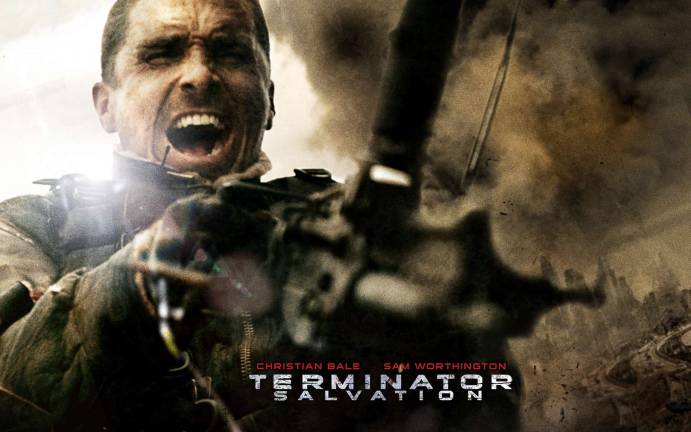Study: PG-13 gun violence rivals that of R movies

PHILADELPHIA — The amount of gun violence in the top-grossing PG-13 movies has more than tripled since 1985, and in 2012 it exceeded the gun violence in the top-grossing R-rated movies, according to researchers at the Annenberg Public Policy Center and the Ohio State University.
The overall rate of violence in the biggest box-office movies has more than doubled since 1950, the researchers report in a new study.
The study, “Gun Violence Trends in Movies,” published in the December issue of Pediatrics, shows that in 1985, the first full year of the PG-13 rating, the amount of gun violence in popular PG-13 movies was similar to that in movies rated G and PG. Since then, the gun violence in PG-13 movies has grown, and since it has rivaled the level of gun violence in R-rated movies.
“It’s disturbing that PG-13 movies are filled with so much gun violence,” said Dan Romer, director of the Adolescent Communication Institute of the Annenberg Public Policy Center (APPC) and a co-author of the study. “We know that movies teach children how adults behave, and they make gun use appear exciting and attractive.”
The dramatic growth of gun violence in movies aimed at younger viewers is especially troubling, the researchers said, because of the “weapons effect,” a finding that just the sight or depiction of a gun can make people behave more aggressively. “Because of the increasing popularity of PG-13 films, youth are exposed to considerable gun violence in movie scripts,” the researchers said in the study. “The mere presence of guns in these films may increase the aggressive behavior of youth.”
What the ratings means
A G rating is “all ages admitted.” PG means “parental guidance suggested” for young children. PG-13 stands for “parents strongly cautioned” for children under 13. R stands for “restricted,” and children under age 17 must be accompanied by a parent or adult guardian.
By definition, a PG-13 movie is supposed to have less violence than an R-rated movie. The Motion Picture Association of America says on its website that the violence in a PG-13 movie “does not reach the restricted R category.” This study shows that it does.
Patrick E. Jamieson, a study co-author and director of APPC’s Adolescent Risk Communication Institute, said that this study adds to previous ones showing that the overall level of violence in PG-13 movies is no different than that in R-rated movies.
“The picture is grimmer than that because gun violence is even greater in PG-13 films than in R films," he said. "Children are not restricted from seeing PG-13 movies — parents are just warned about the content.”
The MPAA’s definition of a PG-13 movie says, “There may be depictions of violence in a PG-13 movie, but generally not both realistic and extreme or persistent violence.” By contrast, theMPAA says a movie rated R may include “intense or persistent violence.”
The study was based on the APPC’s Coding of Health and Media Project’s database of 945 movies drawn from the 30 top-grossing movies each year from 1950-2012, based on annual boxoffice sales as ranked by Variety magazine. Half of the top 30 movies each year were randomly chosen, and trained coders counted sequences of violence in those films.
The analysis found that 396 of the 420 movies studied since 1985, or 94 percent, had one or more five-minute segments containing violent sequences. Those sequences were coded for the use of guns. The study focused on the firing of handheld guns with the intent to harm or kill a living being, excluding acts such as hunting and the use of large-scale weaponry such as rocket-propelled grenades and artillery. The study excluded violence that was not intended to harm, such as typical sports aggression and accidents.
The number of movie scripts containing segments with gun violence has not generally changed since 1985 in G-, PG-, and R-rated movies, the study found – in fact, it decreased slightly in G and PG films. But it grew considerably in PG-13 movies, which make up more than half of the revenue from the top-grossing movies.
The drive to create a PG-13 rating came from parents’ reactions to the violence in PG-rated movies such as “Indiana Jones and the Temple of Doom,” released in May 1984. It may be time to rethink how violence is treated in movie ratings, said Romer, the study co-author. “We treat sex as R,” he said. “We should treat extreme gun violence as R.”
The study was a joint product of Brad J. Bushman of the Ohio State University, and Patrick E. Jamieson, Ilana Weitz, and Dan Romer of the Annenberg Public Policy Center. Funding was provided by the Annenberg Public Policy Center at the University of Pennsylvania and the Robert Wood Johnson Foundation.
The Annenberg Public Policy Center (http://www.annenbergpublicpolicycenter.org) was established in 1994 to educate the public and policy makers about the media’s role in advancing public understanding of political and health issues at the local, state and federal levels.